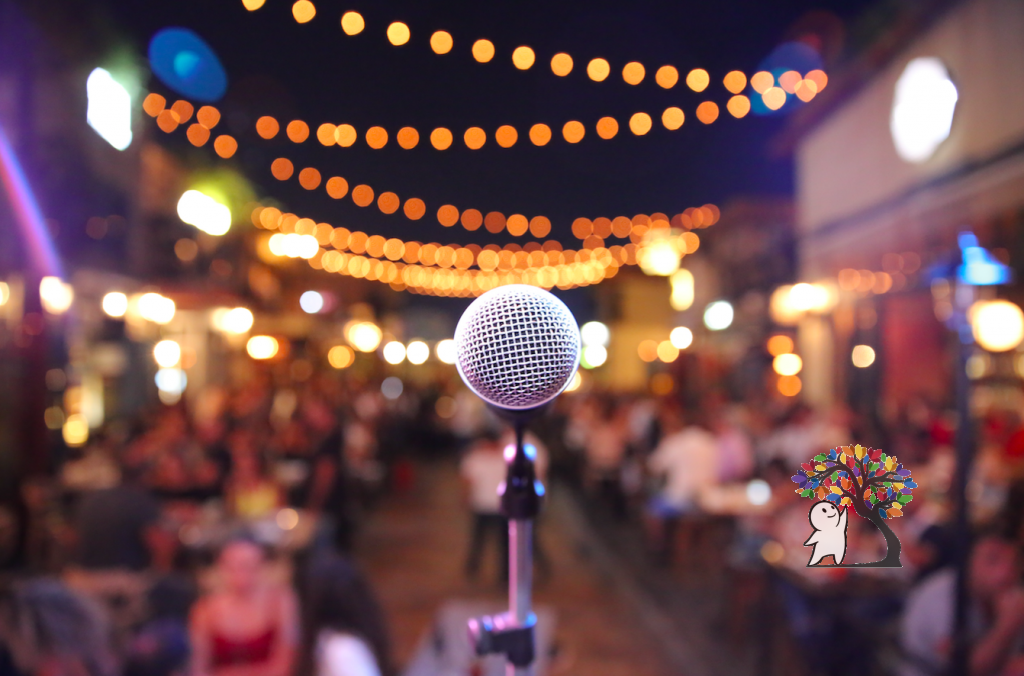Glossophobia: Signs, Symptoms, & Treatments

Today’s article is brought to you in collaboration with Eric Patterson from Choosing Therapy. To check out the original article, click here!
Do you have trouble speaking in public? Have you ever trembled in fear the moment you stepped up in front of people? Well, you’re not alone. With more than 75% of people reporting this fear, speaking in public is perhaps the most common anxiety experienced by the general population. Glossophobia is the term used to describe the intense fear of public speaking and it can impact your mental health and success at work and at school. Fortunately, with coordinated treatment, symptoms can quickly diminish and improve your health and well-being. So to know more about this type of anxiety, here are the signs, symptoms, causes, and treatments for glossophobia.
Before we begin, we would like to mention that this article is created for educational purposes only and is not intended to substitute a professional diagnosis. If you suspect you may have social anxiety or any mental health condition, we highly advise you to seek help from a qualified mental health professional.
What is Glossophobia?
First of all, as we’ve mentioned before, glossophobia describes the fear of public speaking. While you might think it’s a simple and straightforward mental health diagnosis, it’s actually a little more complicated than that. This is because there is no officially recognized psychological condition called glossophobia. Instead, mental health professionals find the condition that best fits the symptoms of someone who is consistently fearful of public speaking. They do this by narrowing down the signs of this type of anxiety.
For example, despite its naming, glossophobia is not a specific phobia. Specific phobias involve intense fears created by triggering stimuli like heights, insects, or death. People with glossophobia don’t typically think they’ll die while giving a speech. Instead, they are consumed by the fear of being judged or embarrassed during or after their speech. Since this fear stems from judgment, glossophobia actually fits into the category of social anxiety disorder, sometimes called social phobia. So instead of glossophobia, you’ll end up being diagnosed with a social anxiety disorder.
What does it look like?
Glossophobia may be hard to spot since it’ll be an invisible condition most of the time. Someone with glossophobia will be able to function well at home, at school, and in the workplace as long as they’re not speaking or presenting in front of others. But when it does come to speeches, they may react in a number of ways including constantly avoiding and refusing any event that involves speaking, even at the expense of failing a class or losing a job.
Glossophobia may present differently in adults and children. Where adults are more subtle and skilled at avoiding speaking tasks, children may end up lashing out and appearing defiant and rude. But their disrespectful behavior may really stem from a fear of public speaking.
Adults, on the other hand, may seem more shy, quiet, or introverted during normal conversations or show more passive nonverbal communication with poor eye contact and a soft voice. They may also have a tendency to stay home longer and avoid social gatherings as well as to self-medicate with alcohol or other drugs to reduce their symptoms before needing to perform.
It’s important to remember to seek help if your anxiety starts to become damaging and destructive to your mental and physical health. These signs may include addiction or substance abuse, low self-esteem issues, a tendency to self-isolate, and most importantly suicidal ideation or attempts.
Symptoms of Glossophobia
There are a number of symptoms for those with glossophobia that range from high levels of anxiety or fear when asked to perform in front of others, to more severe cases, such as experiencing a panic attack. You may be diagnosed if your symptoms include high stress, anxiety, and panic when asked to speak in public, a tendency to avoid any situation that involves public speaking, as well as when your anxiety persists for six or more months and interferes with other areas of your life. It’s important that your anxiety and avoidance are not caused by the effects of substance misuse or by another mental health disorder since glossophobia is often confused with other mental health conditions.
Causes and triggers
There are a number of causes that can trigger glossophobia including a combination of environmental and biological factors. Inherited traits and having a family history of anxiety can make it more likely for you to develop glossophobia. Brain physiology, such as an overactive amygdala may heighten your anxiety. Your life experiences that may have involved a really traumatic or negative experience with public speaking can also contribute to glossophobia.
Treatment of Glossophobia
Fortunately, despite the seriousness of the condition, glossophobia tends to respond well to professional treatment plans. With therapy or a combination of psychotherapy and medication, you can address your symptoms quickly and effectively. Several therapy options such as interpersonal therapy and psychodynamic therapy are often used to confront the fear of public speaking, but cognitive behavioral therapy routinely stands out as the leading treatment. Apart from therapy, engaging with healthy lifestyle changes such as taking care of your physical wellbeing and connecting with those around you can also help improve your situation. Furthermore, certain medications recommended and prescribed by medical professionals may also help you relieve some of the symptoms.
Whether you’re an adult or child who needs help for their fear of public speaking, recognizing the problem and reaching out for help and support can be the first step you take to help deal with your anxiety. Thanks for reading!
Resources
Heeren, A., Ceschi, G., Valentiner, D. P., Dethier, V., & Philippot, P. (2013). Assessing Public Speaking Fear with the Short Form of the Personal Report of Confidence as a Speaker Scale: Confirmatory Factor Analyses among a French-Speaking Community Sample, Neuropsychiatric Disease and Treatment, 9. Retreived from https://www.ncbi.nlm.nih.gov/pmc/articles/PMC3647380/
American Psychiatric Association. (2013). Diagnostic and Statistical Manual of Mental Disorders (5th ed.). Arlington, VA.
Mayo Clinic. (2017, August 29). Social Anxiety Disorder. Retrieved from https://www.mayoclinic.org/diseases-conditions/social-anxiety-disorder/symptoms-causes/syc-20353561
Harvard Medical School. (2010, March). Treating Social Anxiety Disorder. Retreived from https://www.health.harvard.edu/newsletter_article/treating-social-anxiety-disorder
Bernstein, Bettina A. (2018, November 20). Social Phobia. Medscape. Retrieved from https://emedicine.medscape.com/article/290854-treatment
Anxiety and Depression Association of America. (n.d.) Therapy. Retrieved from: https://adaa.org/finding-help/treatment/therapy
Lawson, Karen, Towey, Sue. (n.d.) What Lifestyle Changes are Recommended for Anxiety and Depression? University of Minnesota. Retrieved from https://www.takingcharge.csh.umn.edu/what-lifestyle-changes-are-recommended-anxiety-and-depression



Responses